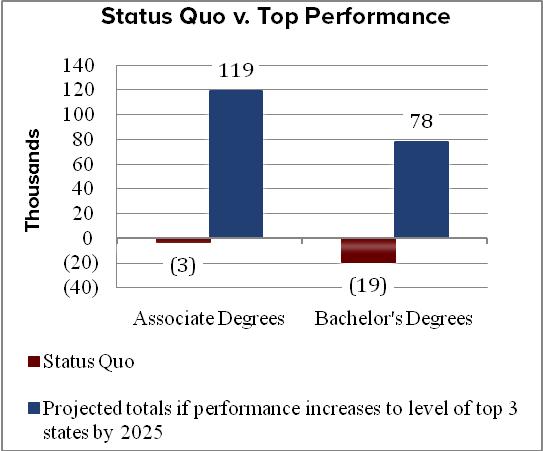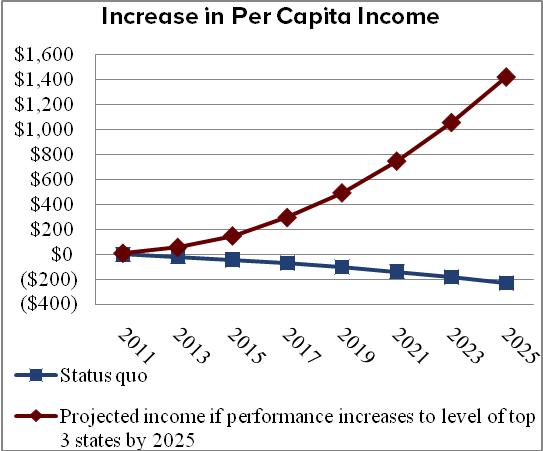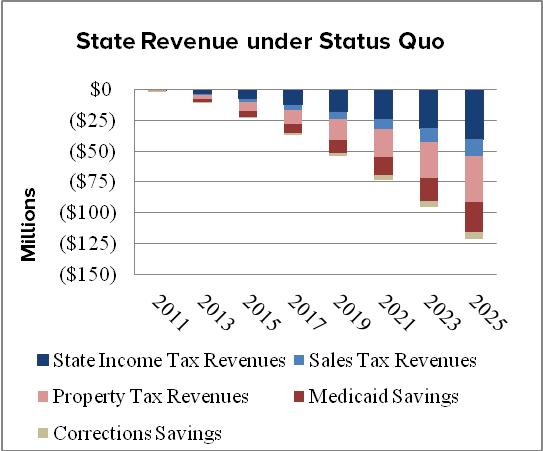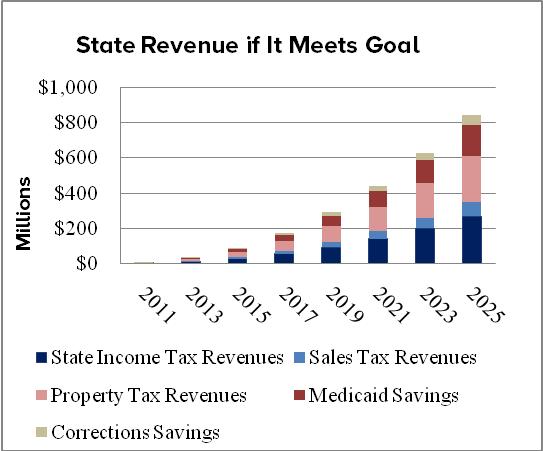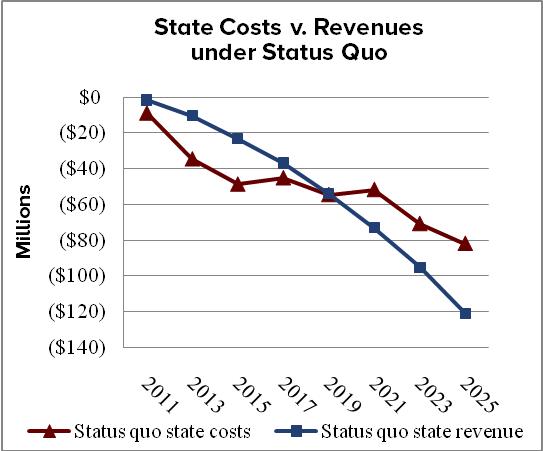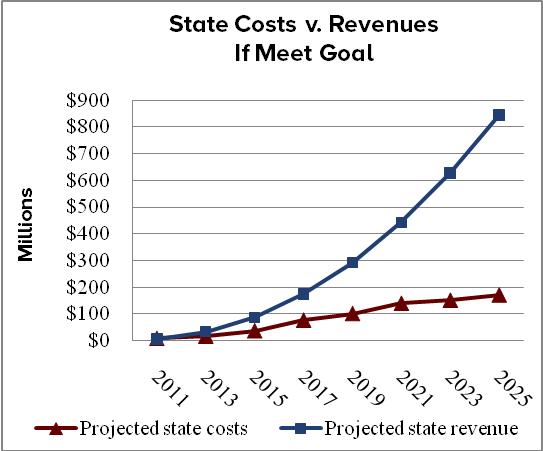Connecticut: The Return on Investment to Increasing Postsecondary Credential Attainment
Visit the Connecticut Return on Investment dashboard tool >>
(NOTE: Dashboard takes a few seconds to load)
|
Connecticut Must Improve College Participation and Credential Attainment Rates to Remain Competitive |
|
|
|
|
Meeting Credential Goal Produces Significant Personal Economic Return |
|
|
Per capita income increases when the state meets 60% credential attainment goal
|
|
|
Meeting Credential Goal Produces Significant Economic Returns to the State |
|
|
Status quo produces negative returns Under current postsecondary investment patterns, Connecticut’s state revenues will decrease by about $120 million in 2025.
|
Meeting 60% credential goal pays off By meeting the 60% credential goal, Connecticut will generate more annual revenue, topping approximately $840 million in 2025.
|
|
State Revenues Exceed Costs When Credential Goal is Met |
|
|
Status Quo: Costs and revenues decline Under current postsecondary investment patterns,
|
Meet 2025 goal: Revenues exceed costs By meeting the 60% credential attainment goal, Connecticut’s revenues exceed postsecondary costs by approximately $670 million by 2025.
|
|
This analysis was prepared using the CLASP-NCHEMS Return on Investment Dashboard tool. See clasp2022.tealmedia.dev/ROIdashboard |
|
